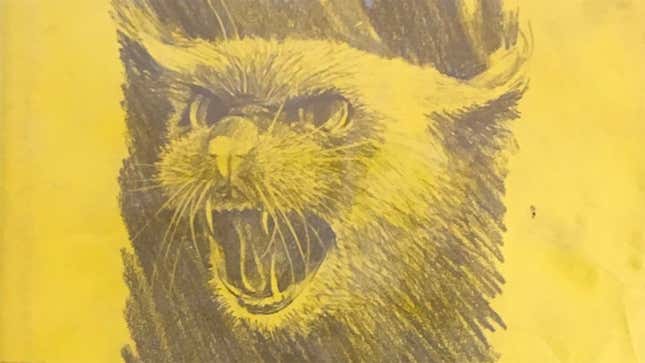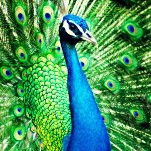This YA Novel About a Possibly Demonic Cat Is Recommended Halloween Reading
The Witches of Worm, now a half-century old, is an unsung creepfest with uncommon compassion for its lonely tween protagonist.
BooksEntertainment

Many of us who’ve owned/been owned by cats should be able to relate to the logline of the 1972 young adult novel The Witches of Worm as it appeared on the website of its late author: “Jessica reluctantly adopts a kitten that may, or may not, be an evil demon.” Some evil doesn’t have to come home—it’s already there, “slick and silent, worm-thin and worm-gray.”
The Witches of Worm turned 50 earlier this year, and it’s a solid choice if you’re looking for a creepy, breezy read this Halloween season. It is a book that scared the absolute shit out of me as a kid (its final line has stayed with me since the first time I read it). With a subtle hand that respects its YA audience’s intelligence, author Zilpha Keatley Snyder conjures a psychological thriller out of a goofy, commonplace practice: the act of talking to (and manufacturing responses from) one’s pet.
When we meet her at the tail end of summer vacation, 12-year-old Jessica Ann Porter is a lonely kid who has recently been dropped by multiple friends and is largely ignored by her single mother, who was 18 when she had Jessica and maintains a busy social life. The world outside of Jessica’s head matches the bleakness of the one within—even in August, days are “chilling,” and the air tastes “gray and poisonous.” In a cave within the “cliff for a backyard” outside of Jessica’s apartment building (a mind-twisting touch), where Jessica goes to hide out and read her book about the Salem witch trials, she encounters a tiny kitten with slits for eyes. Though she does not like cats, she adopts it anyway and accommodates the rigorous feeding schedule such a small animal requires. The cat is not cute. Her mom says it reminds her of a worm. “I like worms,” Jessica replies. “I like worms a lot better than kittens.” Jessica is an extremely weird child.
-

-

-

-

-

-

-

-

-

-

-

-

-

-

-

-

-

-

-

-

-

-

-

-

-

-

-

-

-

-

-

-

-

-

-

-

-

-

-

-








































